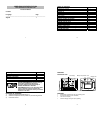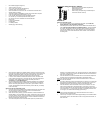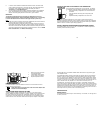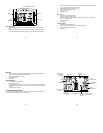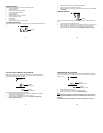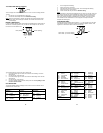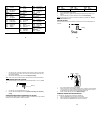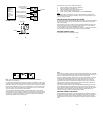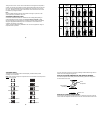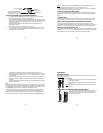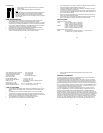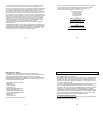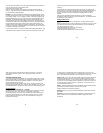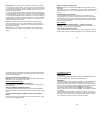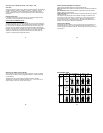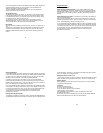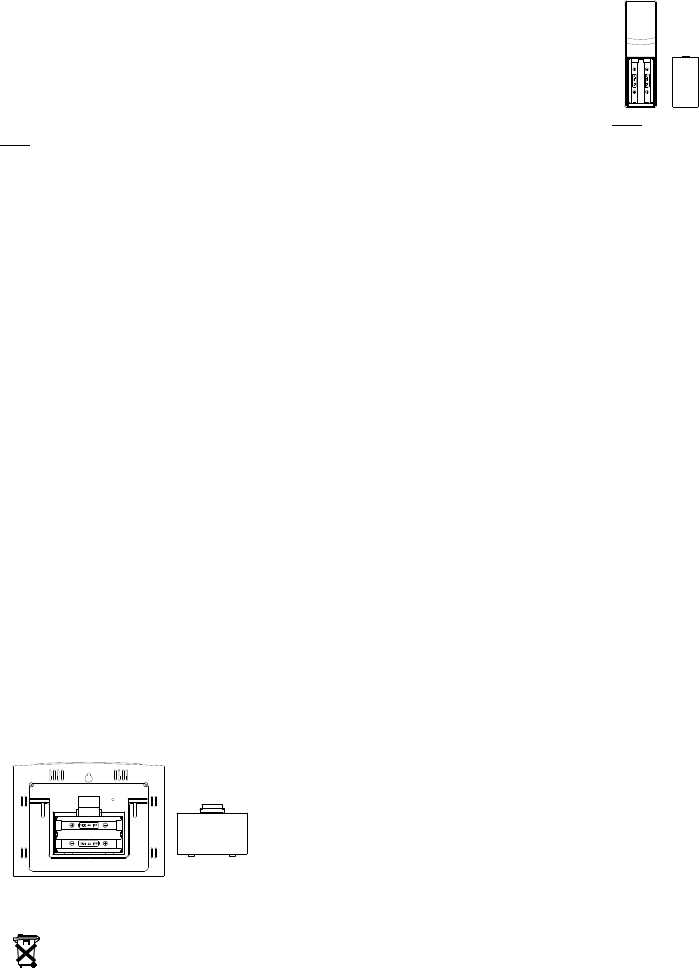
9
8. In order to ensure sufficient 915 MHz transmission however, this should under
good conditions be a distance no more than 330 feet (100 meters) between the
final position of the Weather Station and the transmitter (see notes on
“Positioning” and “915 MHz Reception”).
9. Once the remote temperature has been received and displayed on the Weather
Clock, the WWVB time (radio controlled time) code reception is automatically
started. This takes typically between 6-8 minutes in good conditions.
IMPORTANT:
Transmission problems will arise if the setting for additional sensors is not
followed as described above. Should transmission problems occur, it is necessary
to remove the batteries from all units and start again the set-up from step 1.
Note:
If after 10 minutes, the Atomic auto-set time (WWVB time) has not been received,
press the SET key to manually enter a time initially.
Daily WWVB reception is attempted at full hour between 12:00 am to 6:00 am. If
the reception is successful, there will no reception attempt until the following day.
When this is successful, the received time will override the manually set time. The
date is also updated with the received time. (Please refer also to notes on “WWVB
Radio controlled Time” and “Manual Time Setting”).
10
TO
INSTALL AND REPLACE BATTERIES IN THE TEMPERATURE
TRANSMITTER
The Temperature Transmitter uses 2 x AA, IEC LR6, 1.5V battery.
To install and replace the batteries, please follow the steps below:
1. Remove the battery compartment cover at the back of the
transmitter.
2. Insert the batteries, observing the correct polarity (see
marking).
3. Replace the battery compartment cover on the unit.
Note:
In the event of changing batteries in any of the units, all units need to be reset by
following the setting up procedures. This is because a random security code is assigned
by the transmitter at start-up and this code must be received and stored by the Weather
Station in the first 3 minutes of power being supplied to it.
INSTALL AND REPLACE BATTERIES IN THE WEATHER STATION
The Weather Station uses 2 x AA, IEC LR6, 1.5V batteries. To install and replace the
batteries, please follow the steps below:
11
1. Remove the cover at the back
of the Weather Station.
2. Insert batteries observing the
correct polarity (see marking).
3. Replace compartment cover.
BATTERY CHANGE:
It is recommended to replace the batteries in all units on an annual basis to ensure
optimum accuracy of these units.
Please participate in the preservation of the environment. Return used
batteries to an authorized depot.
ABOUT WWVB RADIO CONTROLLED TIME
The NIST (National Institute of Standards and Technology—Time and Frequency
Division) WWVB radio station is located in Ft. Collins, Colorado, and transmits the exact
time signal continuously throughout the United States at 60 kHz. The signal can be
received up to 2,000 miles away through the internal antenna in the weather projection
station. However, due to the nature of the Earth’s Ionosphere, reception is very limited
12
during daylight hours. The wireless weather station will search for a signal every night
when reception is best.
The WWVB radio station receives the time data from the NIST Atomic clock in Boulder,
Colorado. A team of atomic physicists is continually measuring every second, of every
day, to an accuracy of ten billionths of a second per day. These physicists have created
an international standard, measuring a second as 9,192,631,770 vibrations of a Cesium-
133 atom in a vacuum. For more detail, visit http://www.boulder.nist.gov/timefreq.htm. To
listen to the NIST time, call (303)499-7111. This number will connect you to an
automated time, announced at the top of the minute in “Coordinated Universal Time”,
which is also known as Greenwich Mean Time (GMT). This time does not follow Daylight
Saving Time changes. After the top of the minute, a tone will sound for every second. It is
possible that your wireless weather station may not be exactly on the second due to the
variance in the quartz. However, the clock will adjust the quartz timing over the course of
several days to be very accurate; under 0.10 seconds per day.
FUNCTION KEYS:
Weather station:
The Weather station has five easy to use function keys: 2 on the left, 2 on the right, and 1
on the top of the unit



